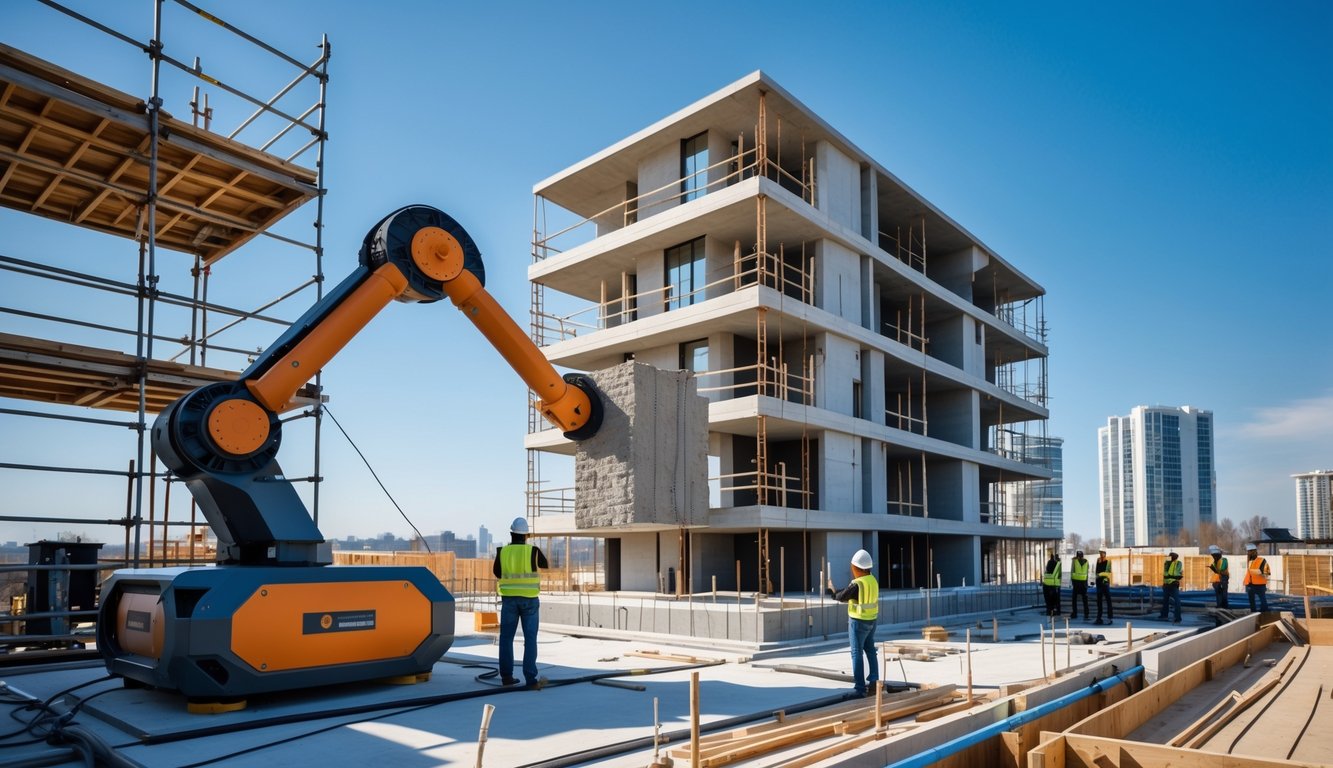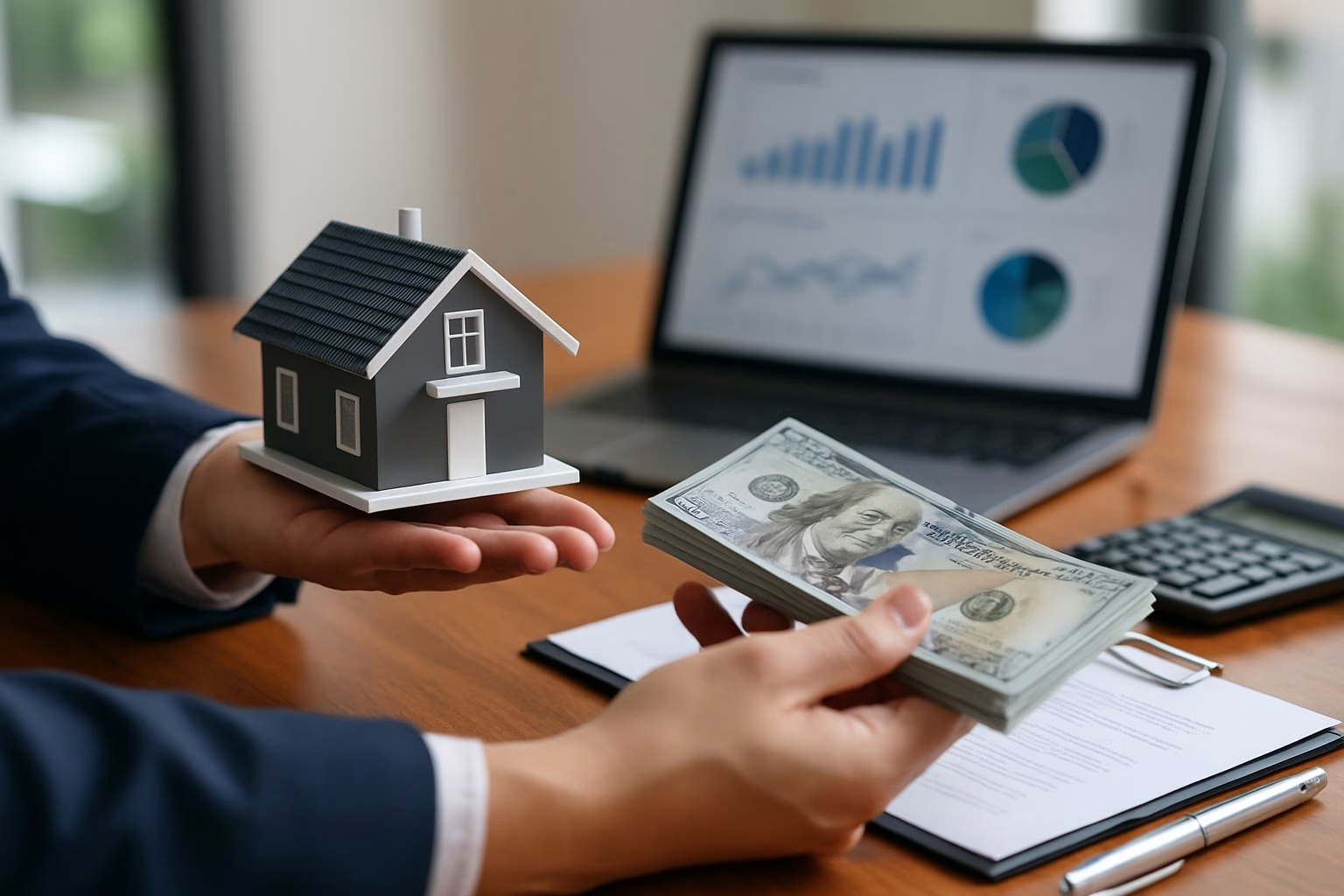3D printing is changing the landscape of commercial real estate construction by rapidly producing three-dimensional objects, significantly cutting costs and timelines. As you look for innovative ways to streamline construction and boost project efficiency, this technology stands out as a practical tool for developers, property owners, and investors. Instead of relying solely on traditional building practices, you now have access to methods that deliver stronger, more customized commercial structures with less waste and labor involved.
When you explore modern construction technology, you’ll find that 3D printing offers flexibility in design and material usage, leading to creative and sustainable projects. Commercial developers are already adopting these techniques to construct office buildings, warehouses, and retail centers faster than before, often at a lower price point. The movement toward 3D-printed solutions is opening up fresh investment opportunities, changing the way you might assess and approach new developments in the commercial property market.
Key Takeaways
- 3D printing in CRE delivers cost and time savings.
- It enables design flexibility and supports sustainable building.
- New technology creates unique opportunities for commercial real estate investors.
3D Printing In Commercial Real Estate Construction
You are witnessing the evolution of the construction industry as 3D printing—also known as additive manufacturing—is adopted for commercial real estate (CRE) projects. This technology uses computer-guided machinery to layer construction materials such as concrete and composites directly onsite.
Why should you care?
- Faster project completion: 3D printing can accelerate construction, with some buildings created in a fraction of traditional timelines. For example, companies have managed to assemble commercial structures in days instead of weeks.
- Cost Reduction: By using less labor and more precise material placement, expenses go down. Shorter build times also reduce overhead.
- Design Flexibility: Complex architectural features can be produced with less waste and fewer constraints than conventional methods.
A significant shift is happening where large-scale retailers and developers are experimenting with 3D-printed additions. One example is Walmart’s collaboration with Alquist 3D, where a store expansion was constructed using 3D printing methods.
| Benefits for CRE Investors | How 3D Printing Delivers |
|---|---|
| Lower construction costs | Reduced waste, automated labor |
| Quicker returns | Shorter timelines |
| Custom properties | Greater design freedom |
You may also note that groups like Habitat for Humanity, typically known for housing, are demonstrating how these techniques can translate to commercial solutions—especially for affordable, resilient developments. As 3D-printed construction grows, it opens new opportunities for innovative commercial property design and more efficient project delivery.
Cost Savings And Efficiency Gains
3D printing is changing how you approach costs in commercial real estate construction. By using large-scale robotic printers to create structures, you can dramatically lower both material and labour costs.
Traditional building methods require significant manual labor and create a notable amount of construction waste. With 3D printing, material is placed only where needed, which helps reduce both excess and waste. Studies show this approach can cut construction costs by up to 30% due to less material waste and fewer workers on site.
The impact on efficiency is also clear. For example, a Starbucks store in Texas was built using 3D printing technology, with costs landing on the lower end compared to traditional restaurant construction. As more projects use 3D printing, the per-project cost typically drops further.
Here is a quick comparison:
| Method | Material Waste | Labour Costs | Speed | Construction Costs |
|---|---|---|---|---|
| Traditional Build | High | High | Weeks to Months | $749,000–$2 million |
| 3D Printing | Low | Lower | Days to Weeks | Trending lower as adoption grows |
Speed is another advantage. While conventional builds can stretch over months, 3D printing can deliver commercial buildings in a fraction of the time, sometimes even in a matter of hours for smaller projects.
You also gain more flexibility for affordable housing and commercial spaces thanks to greater cost efficiency. As material costs continue to rise, investing in 3D printing can help mitigate the impact of supply chain fluctuations and tariffs.
These practical changes mean your projects can become both faster and cheaper to build, making 3D printing a powerful tool for commercial real estate development.
Speeding Up CRE Project Timelines
3D printing allows you to complete large-scale commercial real estate (CRE) projects much faster than with traditional methods. The automated process limits manual labor, helping you move from planning to completion in weeks instead of months.
With 3D printing, entire structures—such as office walls or industrial buildings—can be produced in a fraction of the usual time. Some reports note commercial builds see timelines shortened by 30% or more compared to conventional construction with traditional materials like concrete and steel. Learn more about this time efficiency at Disruptive Construction Technologies: 3D Printing and Beyond.
Key factors that contribute to faster project delivery include:
- Automated layer-by-layer assembly
- Minimal materials handling
- Digital-to-physical workflows
- Precise execution, reducing rework
| Construction Approach | Project Timeline | Materials Used |
|---|---|---|
| Traditional | Months to over a year | Concrete, steel, wood |
| 3D Printing | Weeks to months | Concrete, composites |
Faster project turnover benefits your return on investment (ROI). You can lease or sell finished CRE assets to tenants and investors more quickly. In large developments, this improved pace allows you to manage multiple build phases or properties at once.
3D printing’s automation and precise control let you handle repetitive, large-scale tasks reliably. This means less downtime, reduced labor costs, and fewer schedule overruns due to weather or manual error.
Sustainability And Design Flexibility
3D printing in commercial real estate construction directly addresses sustainability by minimizing material waste. This method uses only the amount of material needed for each structure, drastically reducing leftovers compared to traditional building techniques. Construction sites become cleaner, and your projects naturally see a reduced environmental impact.
Key sustainability benefits include:
- Reduced waste
- Lower carbon footprints
- Opportunities for sustainable design
You can explore more about these advantages in modern sustainable construction practices.
The design freedom of 3D printing enables you to create complex geometries and unconventional layouts. Unlike traditional construction, you can customize building shapes, facades, and interior elements without escalating project costs or timelines. This design flexibility is especially valuable when developing unique commercial spaces that set your properties apart.
Examples of design flexibility enabled by 3D printing:
| Conventional Construction | 3D Printing Construction |
|---|---|
| Standard shapes and layouts | Customization of forms and intricate features |
| Material limitations | New materials and mixed applications |
| Slow prototyping | Rapid iteration and prototyping |
3D printing also supports environmentally conscious choices through the use of energy-efficient practices and materials. However, you must ensure compatibility with local building codes and be aware of current material limitations that could affect large-scale commercialization.
If you are looking to maximize both sustainability and architectural innovation in your commercial projects, adopting 3D printing in real estate construction may offer clear advantages over conventional approaches.
Investment Opportunities And Market Trends With 3D CRE Construction
Market momentum for 3D printing in commercial real estate (CRE) is strong, with rapid growth projected worldwide. Industry analysts estimate the global 3D printing construction market reached $53.9 million in 2024 and could grow at a compound annual growth rate exceeding 110% between 2025 and 2030. See more about these projections in this industry analysis.
Start-ups and established players alike are reshaping commercial construction:
- WinSun has implemented large-scale 3D printing in office parks and industrial buildings.
- Tvasta focuses on modular 3D-printed components for rapid commercial project delivery.
- COBOD supplies 3D printers for multi-story office and hotel developments in Europe and Asia.
As an investor, you will likely encounter new opportunities in business parks, logistics centers, retail sites, and even mixed-use towers. 3D printing unlocks unique asset types previously limited by traditional construction costs or timelines.
Key factors to watch:
- Adoption rates: Which regions and asset classes are seeing pilot projects or commercial rollouts?
- Sustainability: 3D-printed CRE often uses less material and produces less waste.
- Case studies: Early examples show significant savings in labor and materials for warehouses and mid-rise offices.
| Trend | Description |
|---|---|
| Speed | Faster project delivery and market entry |
| Cost Efficiency | Lower labor, reduced material wastage |
| Customization | New possibilities for unique commercial designs |
By tracking these shifts, you put yourself in position to benefit from CRE’s next major wave of innovation.
The Future Of 3D Printing In Commercial Real Estate Construction
Adoption of 3D printing in commercial real estate (CRE) construction is moving from experimental projects to larger, mainstream applications. Innovations are enabling construction teams to build commercial structures faster and with improved cost efficiency. For example, a Walmart Supercenter recently became the site of one of the largest 3D printed commercial projects in the U.S..
Key trends shaping the future of 3D printing in CRE:
- Faster project timelines: Rapid layer-by-layer building allows for significantly reduced construction schedules.
- Design flexibility: Complex geometric forms are achievable, creating new possibilities for innovative commercial property designs.
- Sustainability: Optimized material use results in less construction waste.
You can expect broader adoption of this technology in retail expansions, office space development, and logistics hubs over the next decade. As these innovations continue, building costs will likely continue to decrease, making large-scale projects more feasible for a wider range of investors.
Commercial real estate investors should prepare by:
- Staying updated on 3D printing developments and pilot projects
- Exploring partnerships with technology-focused builders
- Assessing how faster construction and reduced costs can benefit your portfolio
| Aspect | Traditional Construction | 3D Printing in CRE |
|---|---|---|
| Speed | Months to Years | Weeks to Months |
| Design Limits | Standardized | Highly customizable |
| Waste | High | Low |
This growing incorporation of technology in construction signals a fundamental shift in how you might approach commercial real estate development and investment strategies.
Frequently Asked Questions
3D printing is reshaping commercial real estate construction by introducing new workflows, creating high-profile properties, and encouraging established companies to invest in innovative approaches. As you consider adopting this technology, it is important to understand its current landscape, cost implications, and the key benefits for real estate investors.
What are the most notable examples of 3D printed CRE properties currently on the market?
Notable examples of 3D printed commercial real estate (CRE) buildings include projects like office spaces, retail facilities, and small-scale industrial buildings produced in regions such as the Middle East, Europe, and North America. Some office buildings in Dubai and Europe are fully or partially 3D printed, showcasing the technology’s capabilities for larger, commercial-scale projects.
Which companies are leading the way in 3D printed construction for real estate?
Firms such as COBOD, X-Hab 3D, and other specialized companies focus on commercial-scale 3D construction globally. These organizations are advancing 3D printing in commercial construction with proprietary technologies and ongoing commercial projects. You can learn more about industry leaders and innovators at COBOD’s FAQ and X-Hab 3D’s resource page.
How does the cost of 3D printed buildings compare to traditional construction methods?
3D printed commercial properties generally show lower labor and material costs due to automation and efficient resource use. While exact savings depend on the project’s size and complexity, you may see reductions in both direct construction costs and overall project timelines. These factors can make 3D printed buildings a competitive alternative to traditional builds.
What are the benefits of investing in a 3D printed commercial property?
You might benefit from faster project delivery, greater design flexibility, and potentially lower maintenance costs due to the precision of automated construction methods. In addition, early adopters in this space often achieve greater market visibility and access to sustainable building certifications, as some 3D printing materials and processes support energy efficiency and low-waste construction.
Can 3D printed construction significantly lower overall real estate development costs?
By reducing the need for manual labor, minimizing material waste, and speeding up construction schedules, 3D printed construction can lower the total cost of development for certain types of commercial properties. These savings are especially notable in repetitive structures or projects with straightforward designs. Find further details at Printerra’s FAQ on 3D printed houses.
In what ways might 3D printing technology disrupt the traditional construction industry?
3D printing introduces automation, digital designs, and new supply chain models, allowing you to complete complex builds with fewer resources. This shift could lead to changes in construction workforce needs, project management approaches, and regulatory considerations. It encourages both established developers and new entrants to rethink long-standing industry practices and adapt to a more tech-driven environment.
Would you like to publish a free blog post on this site?
Are you a real estate professional, property manager, or industry expert with valuable insights to share? We welcome guest contributors who can provide unique perspectives and actionable advice for our community of property investors and managers.
Guest posting is an excellent way to share your expertise while building backlinks and connecting with our engaged audience of real estate investors and professionals. Best of all, there’s no charge to publish your post on our site!

Master the art of real estate investing with The Real Estate Property Management Guide: Premium Edition – your comprehensive roadmap to successful property management.
Whether you’re a novice investor or seasoned professional, this guide covers everything from selecting the right investment properties to tenant management and property marketing.
The author, Jeff Rohde writing as Jeffrey Roark, is a professional with over 25 years of real estate experience. This Premium Edition includes the valuable bonus book Investment Real Estate Analysis: A Case Study to help you identify hidden opportunities and evaluate properties like a professional.
Learn practical, actionable strategies for both residential and commercial properties, from single-family homes to office buildings and shopping centers.
Don’t just buy property – learn how to manage it successfully and maximize your investment potential.
Grab your copy now from your favorite bookseller:
- Amazon (Basic Edition, does not include Investment Real Estate Analysis: A Case Study)
- Books2Read for Apple, Barnes & Noble, Kobo, Scribed, and 8 more sellers with both eBook and paperback options available ((Premium Edition, includes Investment Real Estate Analysis: A Case Study)
- Payhip as a downloadable PDF (Premium Edition)
Ready to take your business to the next level?
- Subscribe to our newsletter
- Visit the learning center
- Learn more about our consulting services



